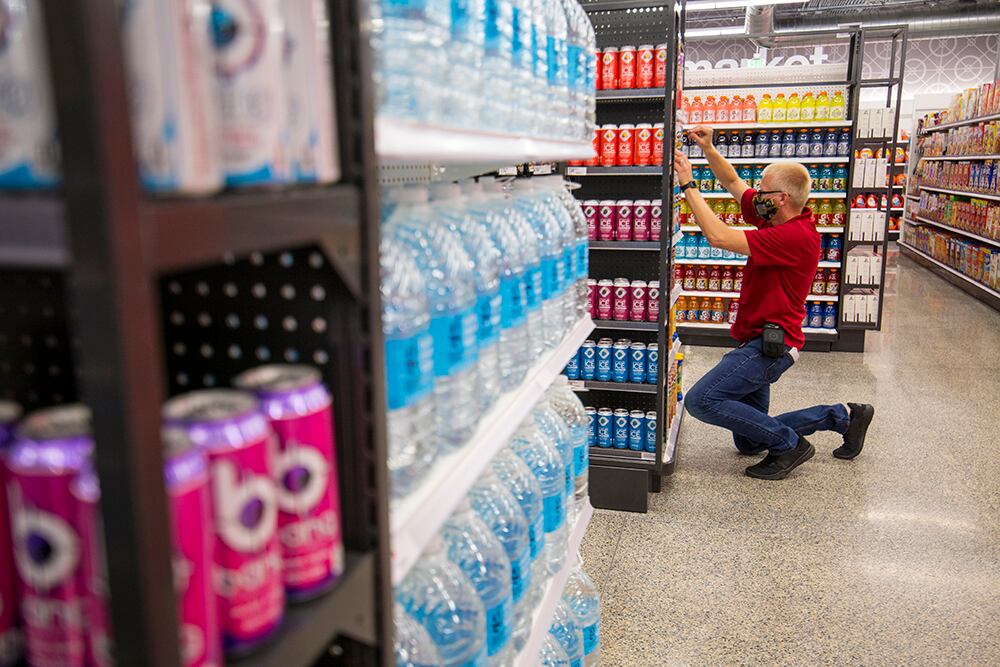Food-at-home prices surged 10.9% year-over-year in July 2022, according to the Bureau of Labor Statistics’ Consumer Price Index.
But while an important figure to monitor, lumping the entire food-at-home category into one average growth figure doesn’t paint the full picture of how inflation is impacting the prices of certain items at the grocery store, claimed Euromonitor in a recent blog post.
“If one is only tracking median prices as an indication of how inflation is impacting consumers, it would not tell the real impact inflation can have on different consumers with different purchasing preferences,” said Euromonitor.
Prices for lower-priced RTE cereal products up +32% vs. +4% for high-priced items
Looking at the price changes for the ready-to-eat (RTE) cereal category by tracking over 4,000 cereal SKUs, Euromonitor found that the median price of cereal increased by 20% in a 12-month period (May 2021 – April 2022).
“Ready-to-eat (RTE) cereals have experienced high levels of inflation due to a multitude of reasons, but the biggest is the war in Ukraine, and the impact it has had on the global supply chain of ingredients. For example, in 2021 Russia and Ukraine produced 43% of global buckwheat output, 19% of rye, 18% of oats, and 15% of wheat. As a result, the supply chain disruptions have had a drastic impact on global commodity prices, in turn inflating prices of packaged food products like cereal,” noted Euromonitor.
To uncover the deeper impact of how inflation has affected the RTE cereal category, Euromonitor tracked price levels for products in the 75th (higher-priced items) and 25th (lower-priced items) percentiles.
“For the US market, there was a drastic difference in how these prices performed,” said Euromonitor.
Higher-priced products saw a 4% unit price increase during the 12-month period, while lower-priced products saw a significant price increase of 32% over the same time frame.
“This can have a profound impact on consumers’ budgets, and means that consumers purchasing lower-priced RTE cereals during this time period saw their breakfast budgets for this staple rise disproportionately compared with those consumers purchasing higher-priced products,” noted Euromonitor.
Applying the same framework across other categories, Euromonitor uncovered a similar trend where 11 of 15 categories tracked by Euromonitor saw unit prices of lower-priced times outpace the median unit price including snack bars, eggs, bread, rice, processed cheese, standard fresh ground coffee, cow’s milk, yogurt, pastries, and jams & preserves.
Categories where unit prices of lower-priced items did not grow faster than its median unit price included butter, apples, bacon, and reconstituted 100% fruit juice.
“Companies should closely watch this discrepancy in price increases across different price points, as there could be many opportunities to attract new consumers as previous pricing gaps narrow,” suggested Euromonitor.
Tracking supply chain availability
Tracking supply chain availability metrics serves as another valuable way to monitor price changes in specific categories given the relationship between product availability and changes in prices, according to Euromonitor.
Analyzing the same 15 food categories, Euromonitor found that butter, yogurt, and cow’s milk had strong availability largely due to the US having a stable supply of milk production during the measured 12-month time period.
However, RTE cereals SKUs being tracked not only had a higher than average out-of-stock percentage but also had an above-average fluctuation of available SKUs.
“These availability struggles are a major reason for some of the price increases seen for RTE cereals,” Euromonitor commented.
Opportunities to respond and adapt to challenging economic climate
“Businesses will continue to face challenging economic environments with hypersensitive consumer sentiment. But while inflation poses many challenges, it also opens up opportunities to enhance efficiency and innovation and adapt business strategy,” said Euromonitor.
To best respond and prepare for the continued impact of inflation and the challenging economic environment, Euromonitor stressed that CPG companies must first understand shifts in consumer behavior as it relates to price sensitivity (e.g. How are your customers going to be impacted financially by higher inflation? Which price points are your customers most likely to be impacted by?) and execute a pricing strategy based on consumer sentiment accordingly.
“An effective strategy allows businesses to navigate through this uncertainty, retain customers, and remain profitable. Tracking prices and availability at a daily level in a standardized manner from a global and local perspective provides key information to track one’s portfolio, but also direct and tertiary competition, to make the right strategic choices,” noted Euromonitor.




